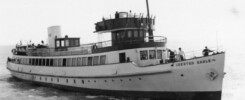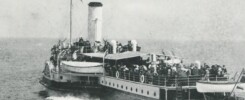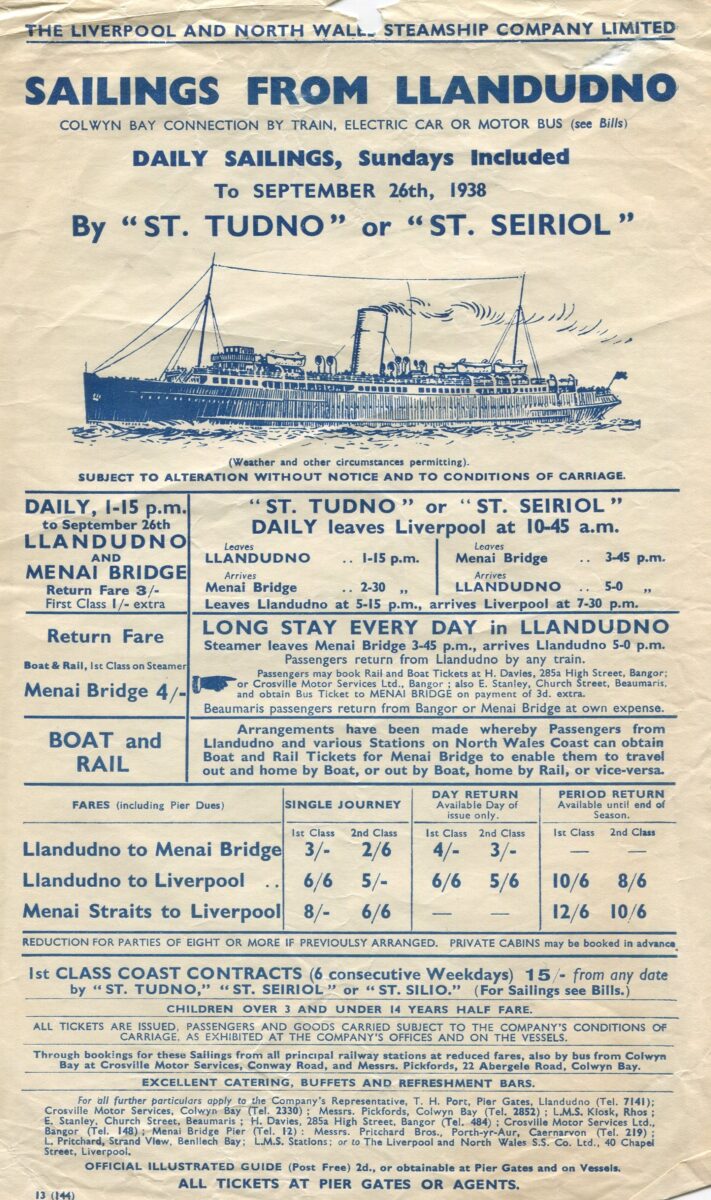
In the summer season of 1938 either the St Tudno or the St Seiriol was due away from the Liverpool Landing Stage at 10.45am every day up to September 26th to sail along the North Wales Coast bound for Llandudno ( 1.15pm) and Menai Bridge (2.30pm – 3.45pm) with return to Llandudno (5pm) and Liverpool (7.30pm).
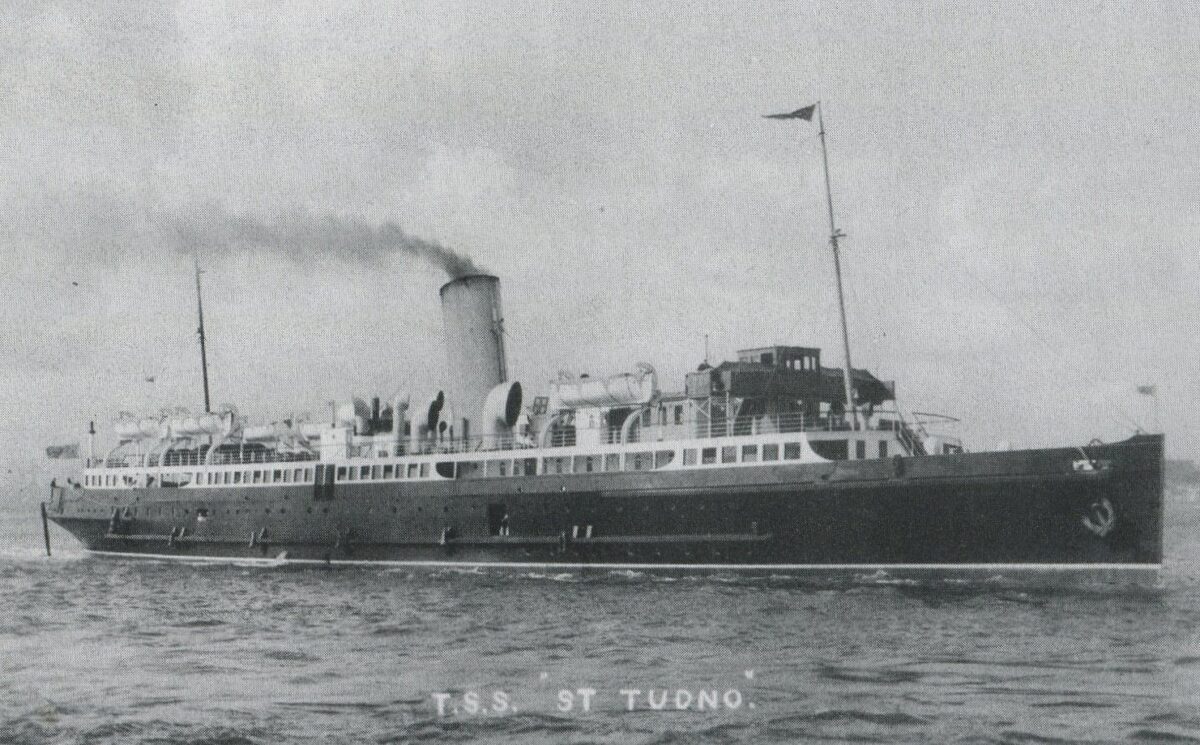
Most often rostered on this route was the St Tudno which, at 318ft in length, 2,326 GRT and with a passenger capacity of 2,493, was amongst the very largest purely excursion steamers ever designed for service anywhere in the UK.
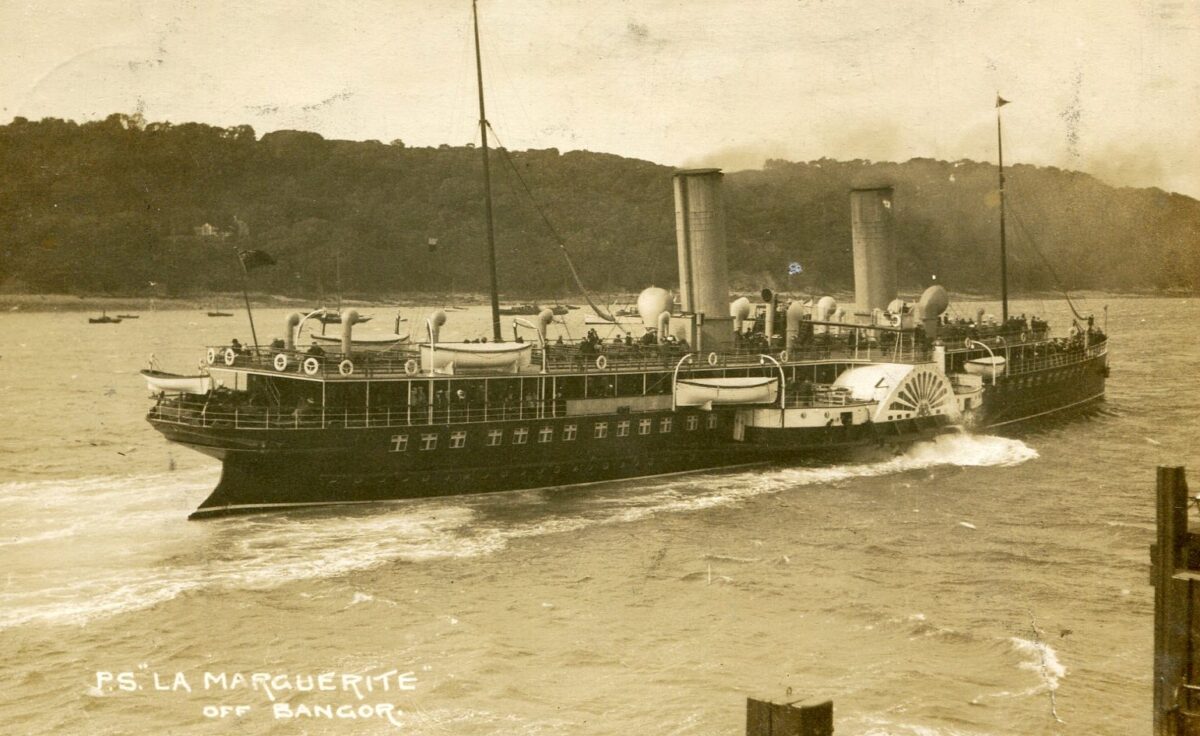
She was built in 1926 for the Liverpool and North Wales Steamship Company specifically for this route as a direct replacement for the equally enormous paddle steamer La Marguerite which was then scrapped.
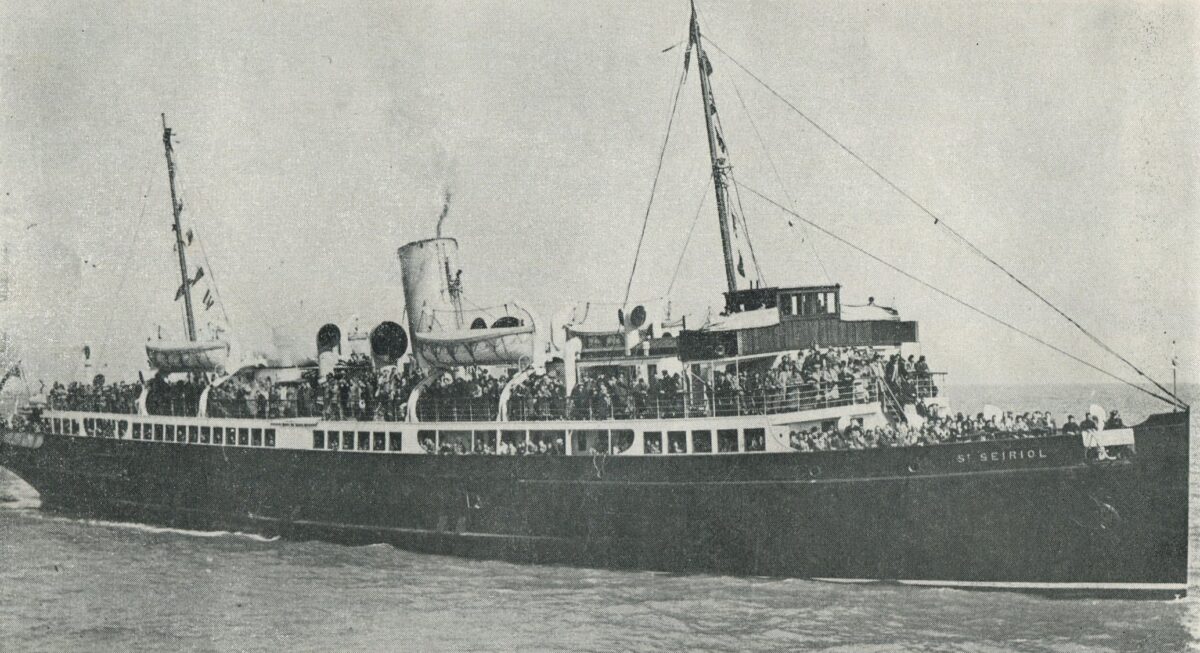
St Seiriol followed in 1931 to provide alternative cover, particularly at quieter times, on the Liverpool to Llandudno route as well as undertaking sailings in her own right in the area including from Llandudno, and sometimes Liverpool, to Douglas, Isle of Man, trips around Anglesey and so on. Although she was very similar in shape, layout and look to St Tudno she was in fact considerably smaller coming in at almost 100ft less in length, with a GRT of just 1,596 tons and a passenger capacity of 1,556. Both ship were propelled by turbines which could push them along at 19 knots and both were at the cutting edge of fashion with oil fired boilers which enabled the company’s marketing material to state that “Ladies may not fear the fall of smuts from smoke upon their hats or frocks”.
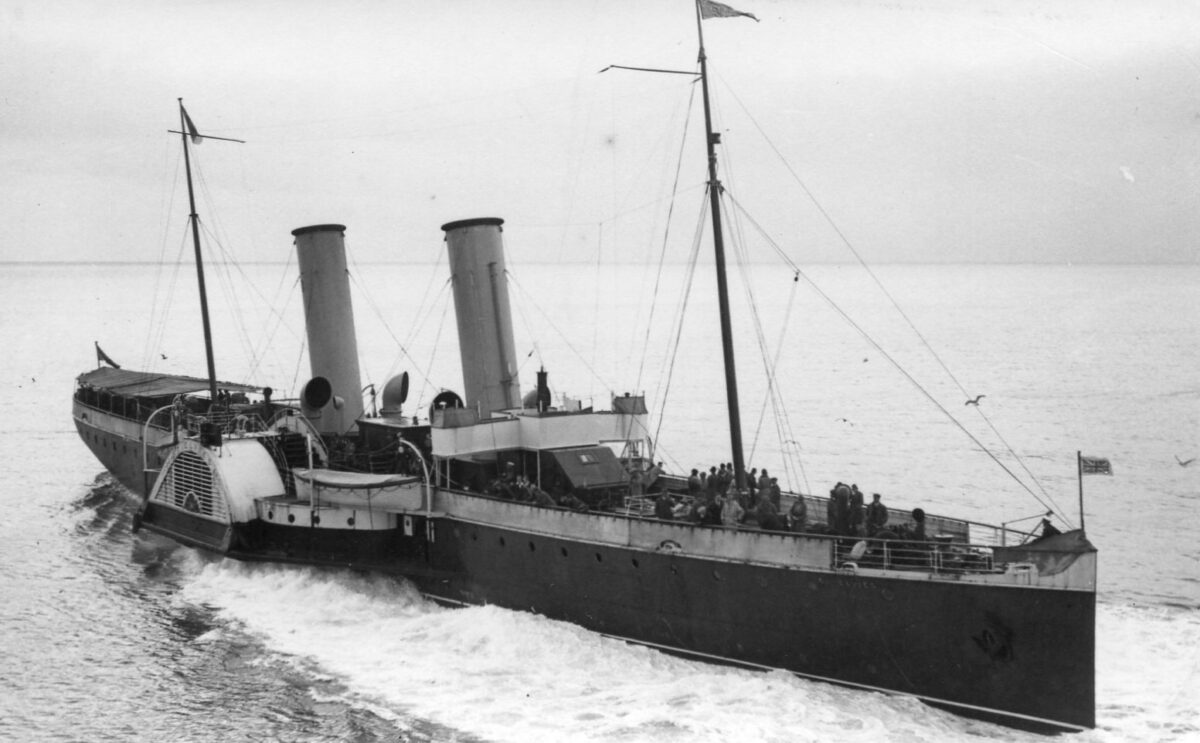
She was a direct replacement for the paddle steamer St Elvies which was broken up after the 1930 season
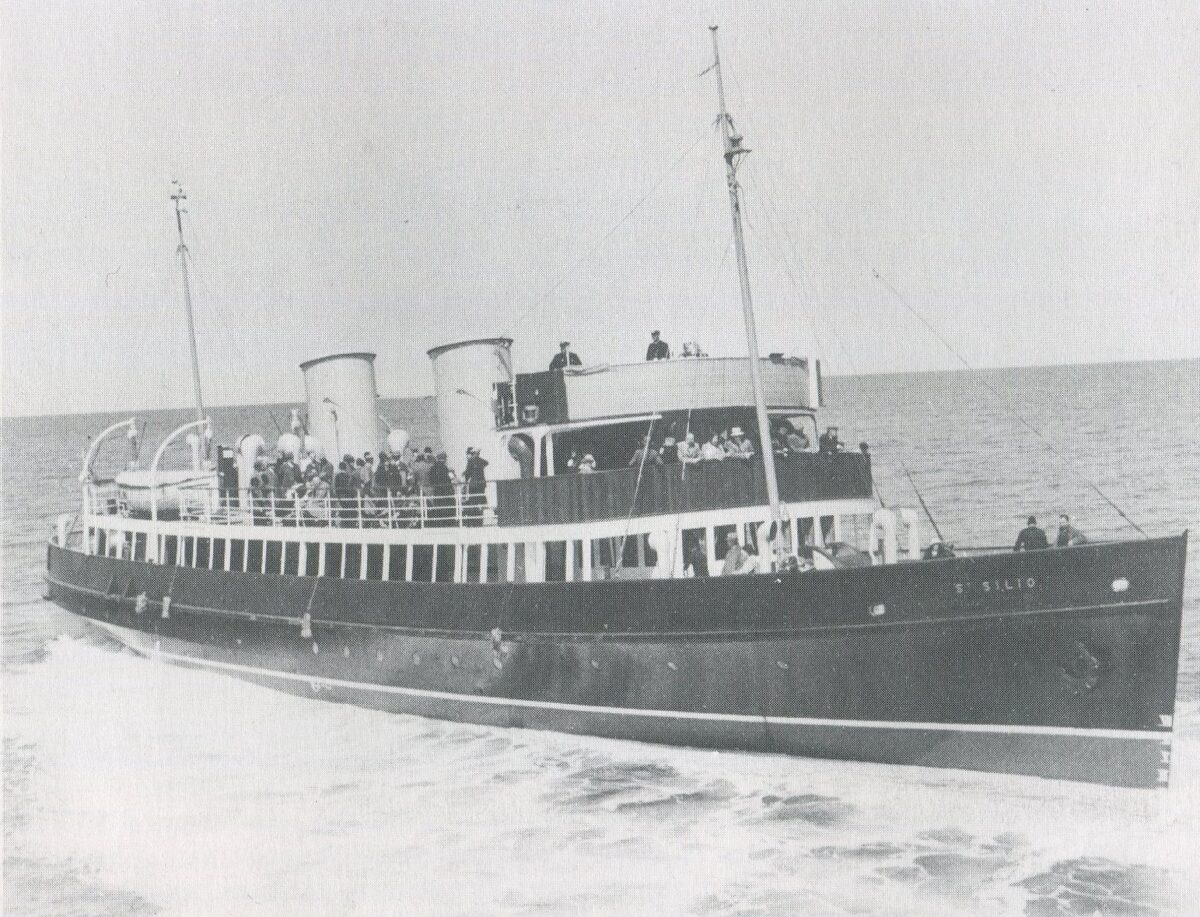
In 1936 they built the St Silio (renamed St Trillo after the war) for the local trade from Llandudno to run chiefly to and from the Menai Strait. At 149ft in length, with a GRT of 314 tons and a passenger capacity for 569 she was considerably smaller than her two purpose built cousins and had diesel engines which pushed her along at a more modest service speed of 13.5 knots.
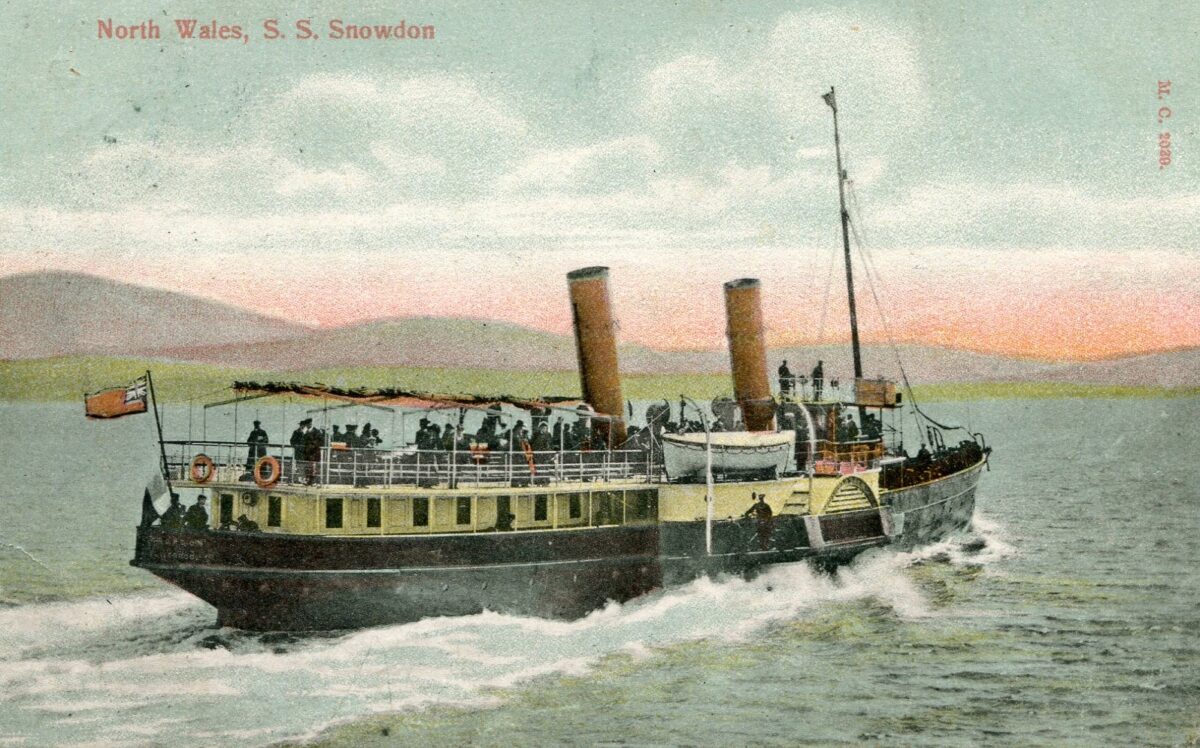
She was an indirect replacement for the Snowdon which was withdrawn and scrapped in 1931.
All three ships returned to their old routes after the war, continued throughout the 1950s and on into the early 1960s by which time a sad decline in the volume of market segments wishing to take advantage of these sort of sea trips led to the company going into voluntary liquidation. St Seiriol made last voyage in steam on 6th September 1961 and was sold for scrap. St Tudno was withdrawn after her last trip on 16th September the following year and was also scrapped.
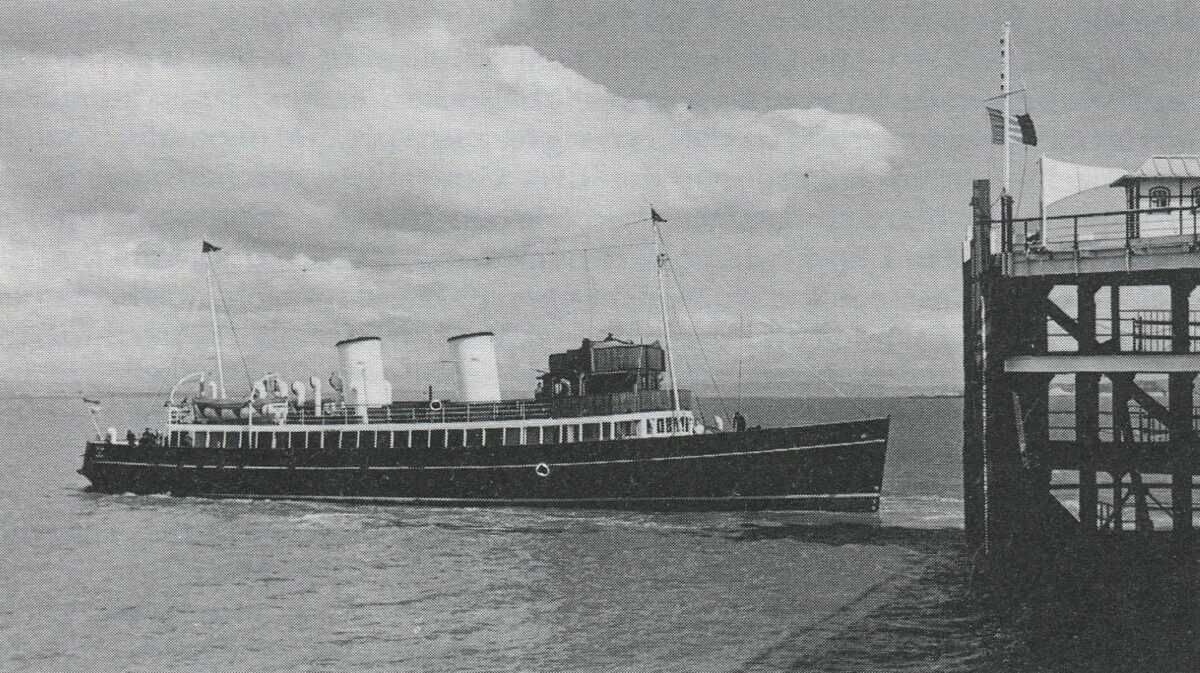
St Trillo was bought by P & A Campbell who continued to operate her on her old timetable along the North Wales Coast from Llandudno using her also at the start and end of the seasons as a more cost effective unit than their paddle steamers on their Bristol Channel and, in particular, their Cardiff/Weston ferry services. Trade continued to decline as the 1960s wore on and so she was withdrawn and laid up in Barry after the 1969 season which is where I last saw her sometime around 1972 looking forlorn and neglected as by then she very much was. She was towed away to be scrapped in Dublin in 1974.
Kingswear Castle returned to service in 2023 after the first part of a major rebuild which is designed to set her up for the next 25 years running on the River Dart. The Paddle Steamer Kingswear Castle Trust is now fund raising for the second phase of the rebuild. You can read more about the rebuilds and how you can help if you can here.
John Megoran

